Ferrara is a beautiful, small city with Renaissance architecture, magnificent monuments and a unique atmosphere. The rich history and culture is reflected in the Renaissance architecture and the art scene.
One of Ferrara’s most significant attractions is the magnificent Este Castle, a 14th-century fortification.The historic centre of the city has been added to the UNESCO World Heritage List. You can admire the impressive, Gothic Ferrara Cathedral and the magnificent Palace of Diamonds with its unique diamond-shaped facade.
Ferrara offers art galleries and museums. The Palazzo dei Diamanti is home to a vast collection of Renaissance masterpieces. The International Museum of Modern and Contemporary Art showcases works by Italian and international artists.
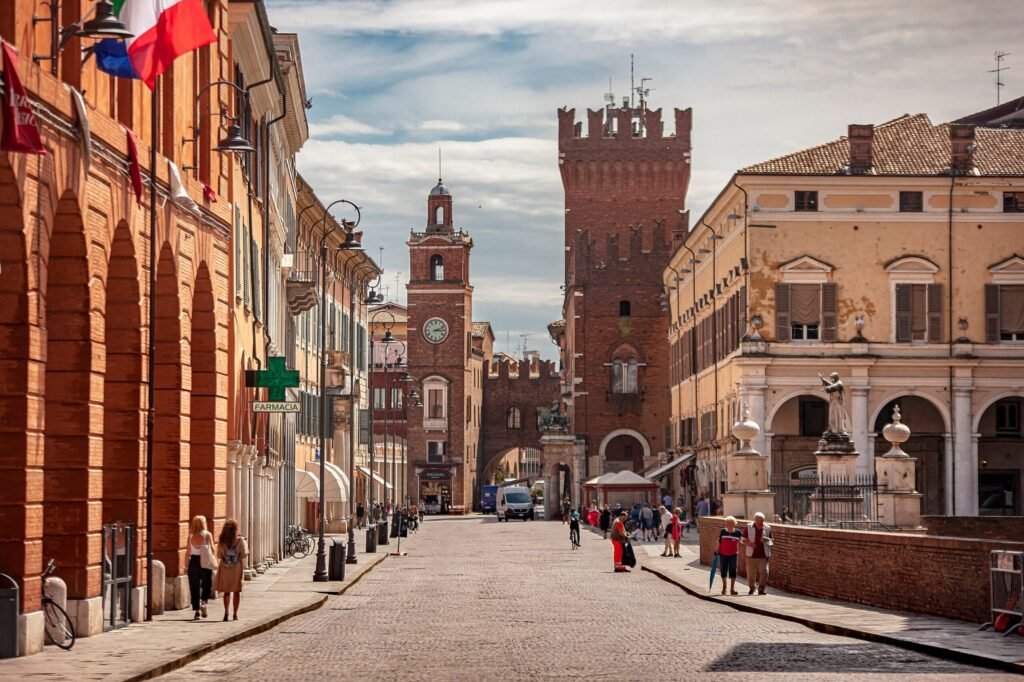
Wander around and admire the ancient city walls, or relax with a leisurely boat ride along the city’s picturesque canals.
The Emilia-Romagna region is famous for its culinary specialties and the wine it produces, tastings of which are worth a visit.
Location
Ferrara is a city in northern Italy, in the Emilia-Romagna region, in the province of Ferrara. Which is situated on a branch of the Po River about 50 km (31 mi) northeast of Bologna.
Estense Castle
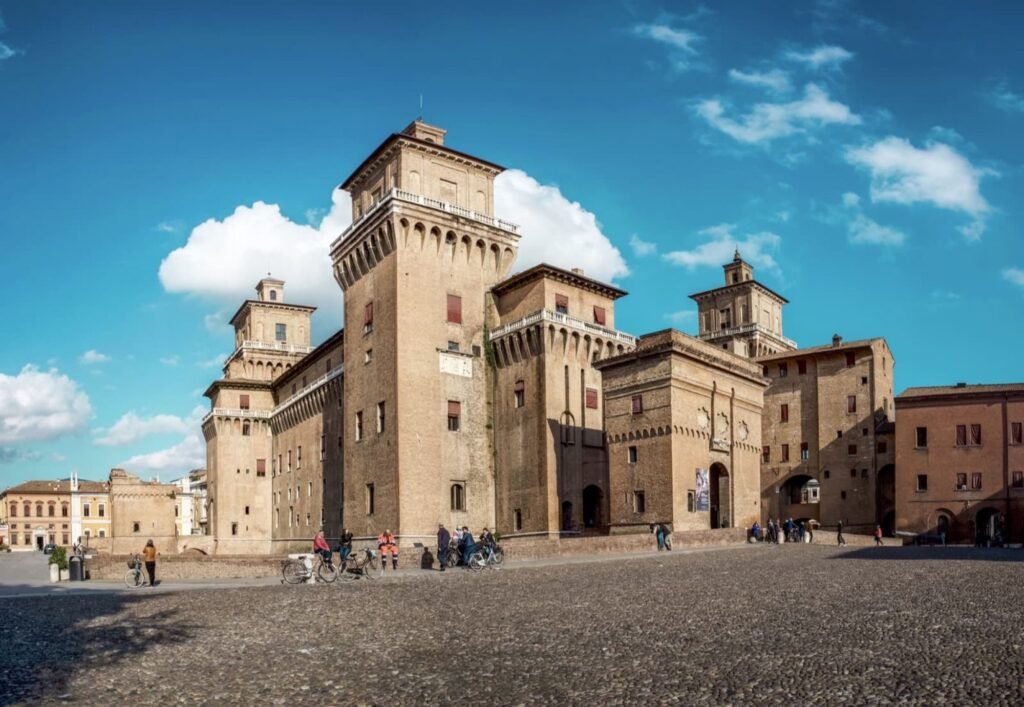
Originally, Castello Estense was built for defensive purposes in 1385. The castle was connected to the adjacent Ducal Palace by a suspended passageway, which made it easier to escape if necessary. During the 15th and 16th centuries, it housed an extraordinary collection of paintings, still preserving its original frescoes today.
The defensive nature of the manor is evidenced by the four corner towers built to protect different sides of the building: The Marchesana, Torre di San Paolo, Torre di Santa Caterina and Torre dei Leoni. The latter is celebrated by a bas-relief depicting two lions.
Palazzo dei Diamanti (Palace of Diamonds)
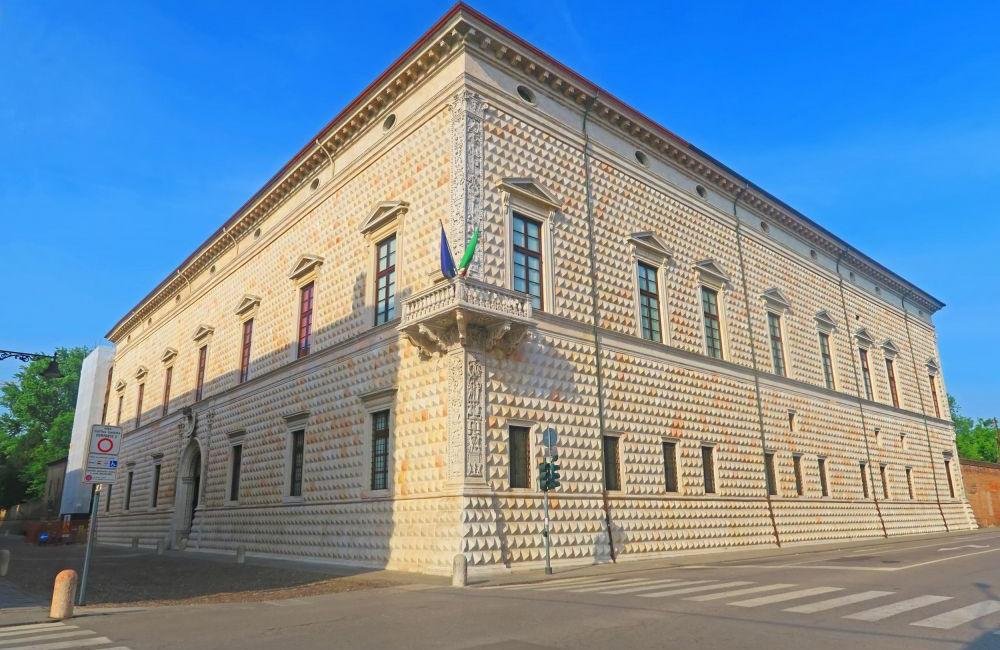
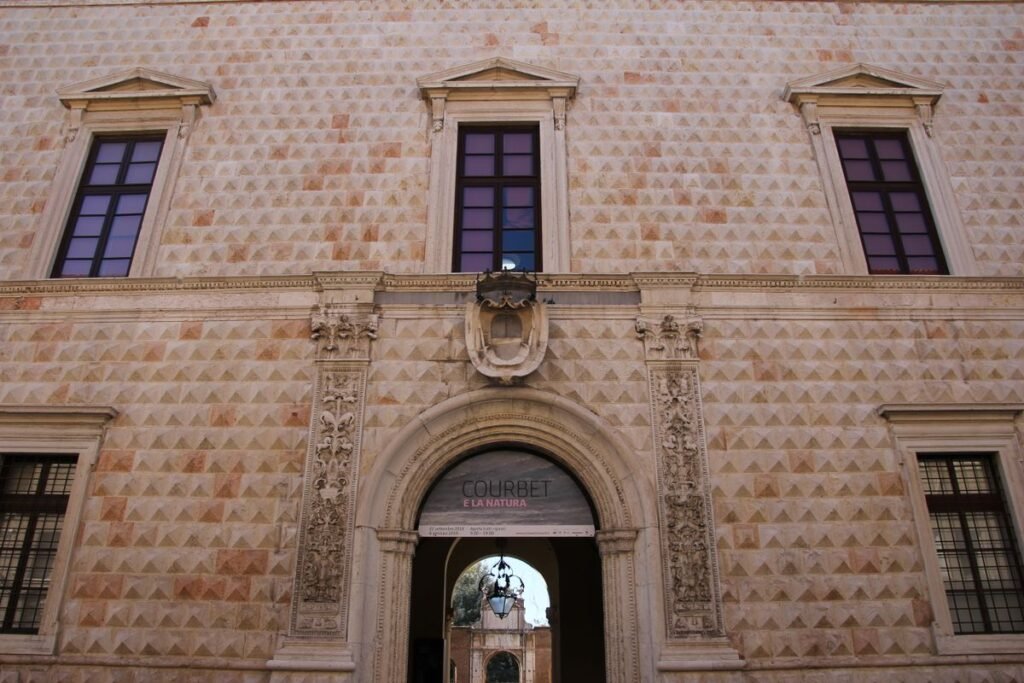

Palazzo dei Diamanti: Its name derives from over 8000 pink and white marble ashlars in the form of diamonds that cover the two facades. The Palazzo dei Diamanti is a venue belonging to the city of Ferrara where exhibitions of international importance are held, thereby contributing to the city’s reputation as a center of art and culture.
Palace is home to two museums: Pinacoteca Nazionale and Galleria d’Arte Moderna (National Art Gallery and Gallery of Modern Art).
Palazzo Schifanoia
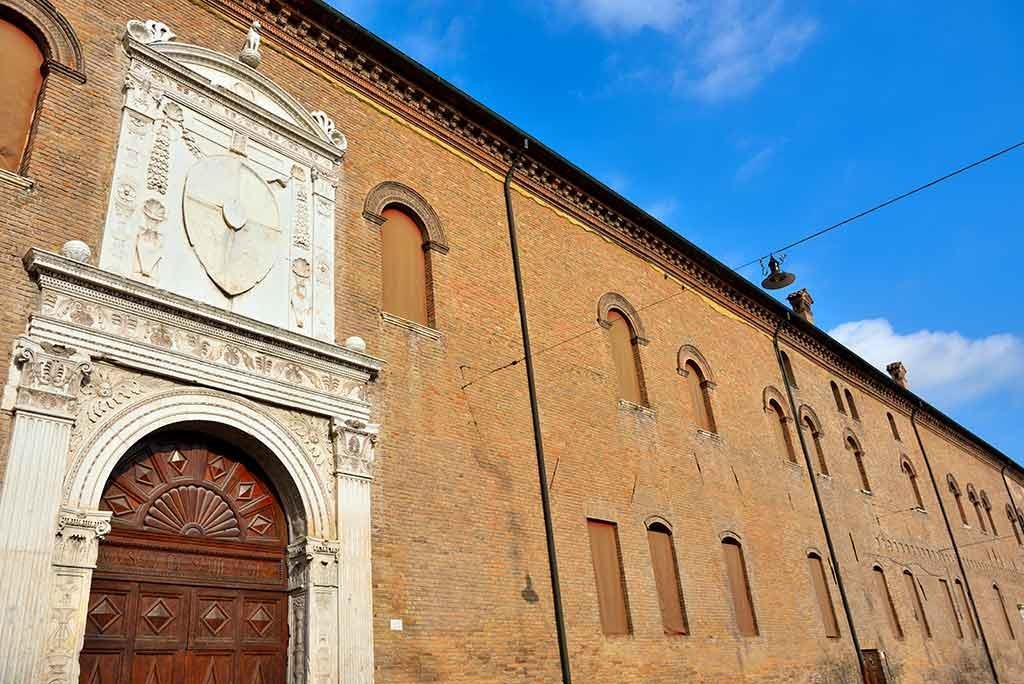
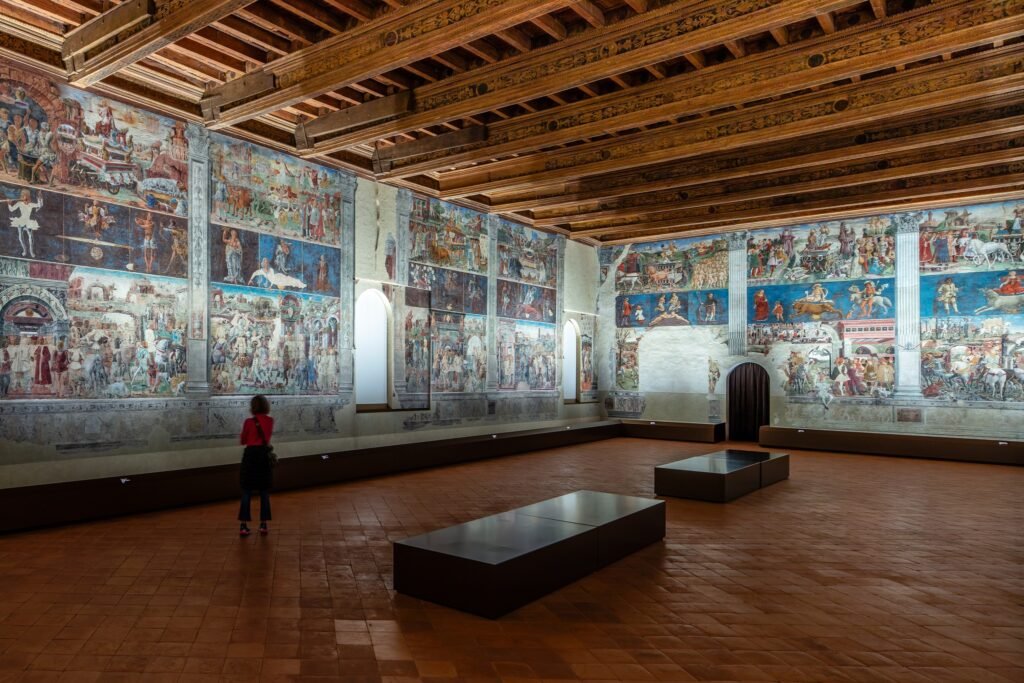
Palazzo Schifanoia is a Renaissance monument, a UNESCO World Heritage Site, which gained international fame thanks to its Renaissance fresco dedicated to the cycle of the months.
Today, the museum houses a collection of sculptures, paintings and decorative arts from the Renaissance, providing an insight into the artistic and historical heritage of the region. The palace is surrounded by gardens with lawns, picturesque paths and fountains.
Ferrara Cathedral

St George’s Basilica or the Ferrara Cathedral (Cattedrale di Ferrara) is the largest and most important temple of Ferrara.The outstanding feature of the pink-and-white 12th-century cathedral is its three-tiered marble facade combining Romanesque and Gothic styles on the lower and upper tiers respectively.
Ferrara Cathedral Museum
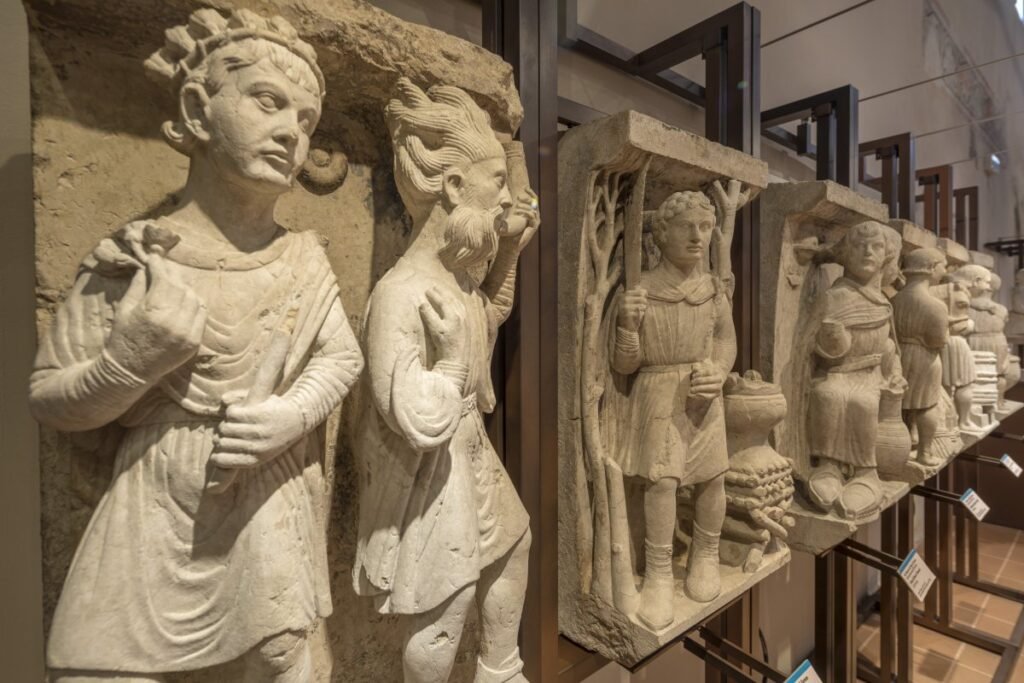
The Cathedral Museum holds the treasures of Ferrara’s art history. The Museum collects most of the rare and precious testimonies of the splendor of Renaissance Ferrara still present in the city.
National Archeological Museum of Ferrara (Palazzo Costabili)
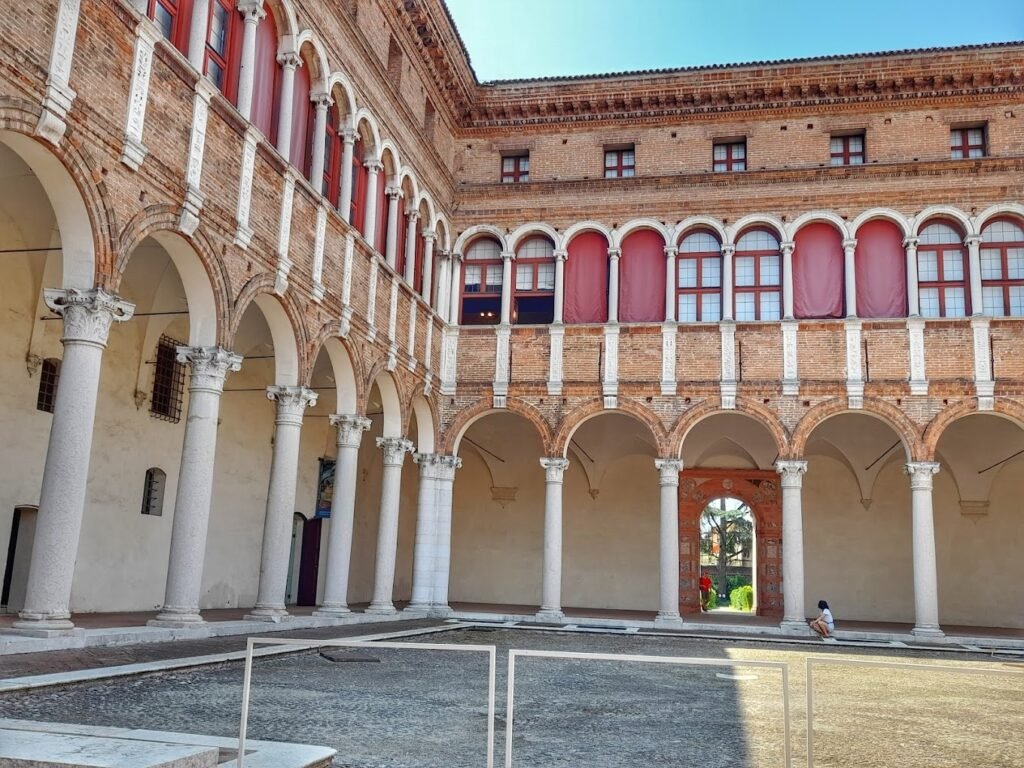
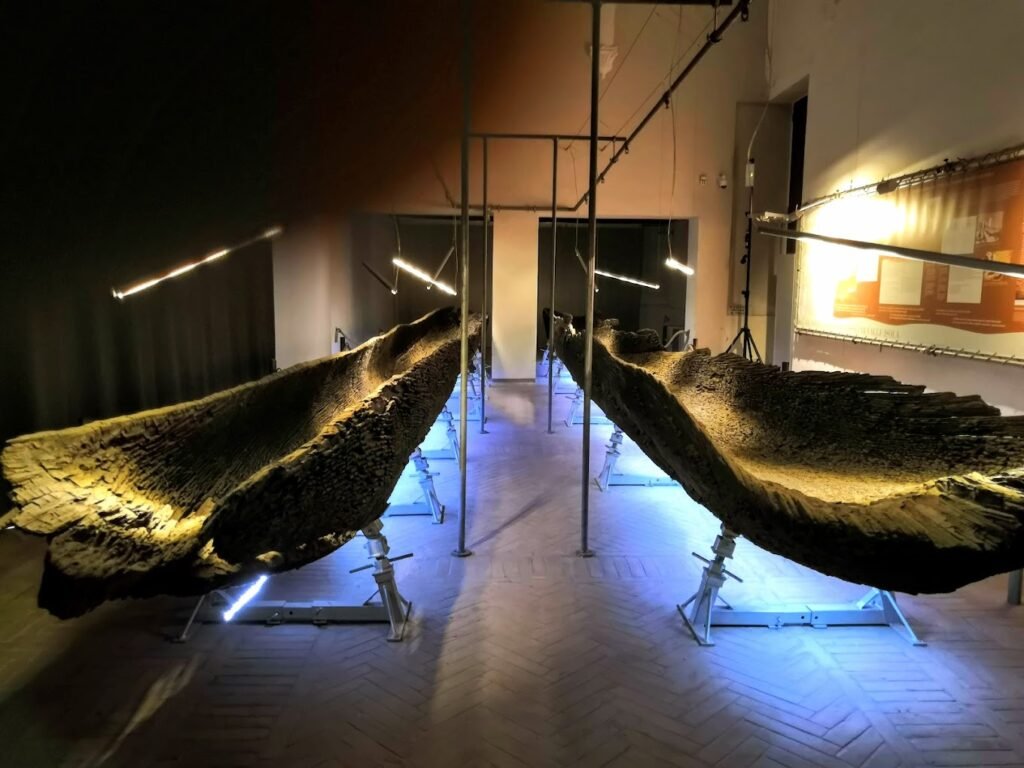
The palace is home to the Museo Archeologico Nazionale. Among its exhibits are pieces from the excavations of the former Etruscan trade port of Spina.
Palazzo Costabili, known as “di Ludovico il Moro”. The Museum displays about one hundred examples of one of the most extraordinary collections of Greek ceramics in the world, composed of the almost 4000 grave goods returned from the Greek-Etruscan city of Spina.
Piazza Municipio
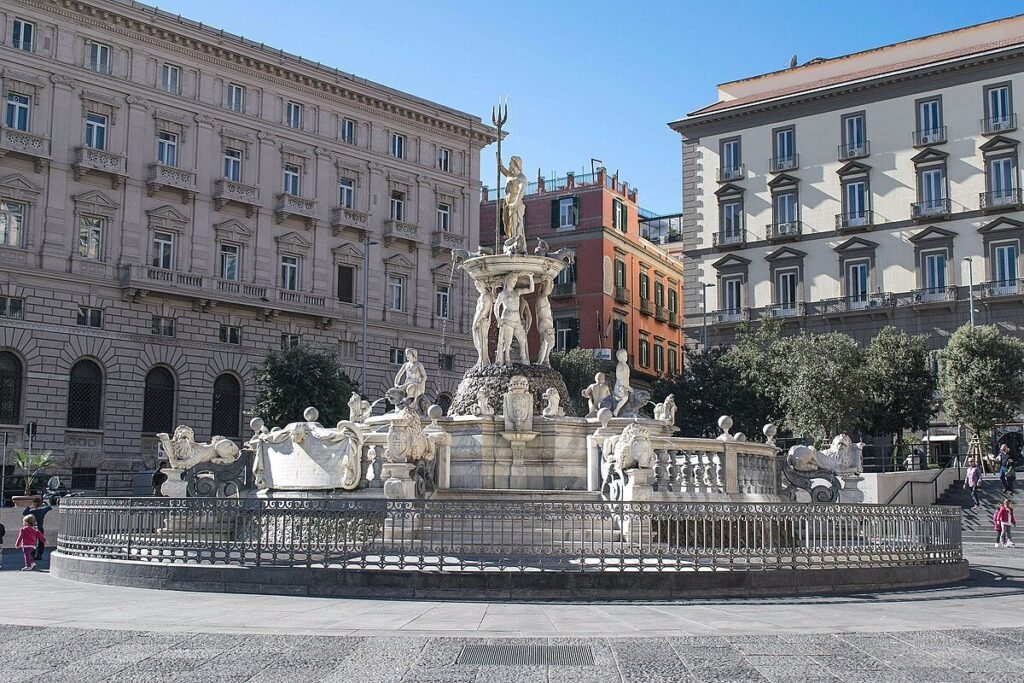
Piazza del Municipio and Palazzo Ducale are two symbolic monuments for the city of Ferrara. The piazza is the heart of the Palazzo Ducale, and to access it you must cross the archway that separates it from the piazza in front of Ferrara Cathedral. Two other entrances are in Via Garibaldi, through the Volto della Colombina, and in Via Cortevecchia, through the Volto del Cavalletto.
Piazza Municipio now hosts various events, concerts and conferences, as well as the rehearsal of the Palio della città, held every year at the end of May in the nearby Piazza Ariostea.
Piazza Trento e Trieste

Piazza Trento e Trieste is located next to the Cathedral of San Giorgio. Once called Piazza del Mercato delle Erbe, it was built in the 12th century and soon became the nerve center of medieval Ferrara. Near the square there are also the Archbishop’s Palace and the Town Hall, and this is no coincidence: being a market area, the square had to always remain under the control of the city power.
Torre dell’Orologio

The Clock Tower, also known as the Loggia dei Notai and Torre dell’Arringa, is a historic building in Ferrara located on the southeastern side of Piazza Trento e Trieste, at the beginning of Corso Martiri della Libertà.
It is likely that the Clock Tower was built in the second half of the 16th century. It was originally most likely a wooden structure, built to house the bell of the nearby Palazzo della Ragione.
